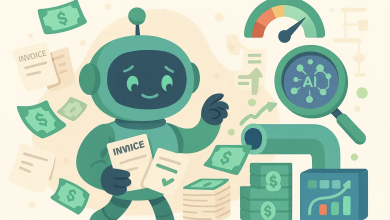
It seems as though the phrase “open banking” is being banded around quite a lot recently within the finance industry but the concept is not a new one. It actually goes back to 2015 when the European Parliament adopted a revised payment services directive, known as PSD2.
Included within this directive were new guidelines around:
- The use of open API’s for developers to build new finance-related services
- More control & transparency over data for account holders
- Open source technology that relates to all of the above
These, along with various other guidelines formed the basis for the ‘Open Banking’ concept, driven primarily by the Competition and Markets Authority. The reasoning behind it was to increase competition and allow for challenger providers to enter into what has become an increasingly difficult sector for new providers and innovators. The release of key data should allow for improved services, more innovation of products and a level of accuracy previously unknown when defining a customer profile.
There is a great quote from Walter Wriston – CEO of Citicorp in the ’70s. He said, “information about money is as valuable as the money itself”. Its this information, released by Open Banking that will allow for the improvement, and creation of financial services.
Why Open Banking is beneficial for innovators and end-users alike?
As mentioned above, the release of key data attributes on potential customers holds a number of obvious benefits to the consumer such as more choice, better customer service, and improved and more accurate product offerings.
For the start-up or fintech innovator wanting to make use of this data, the benefits could be endless.
Take for example the challenger bank Monzo, which offers a current account built for your mobile. Monzo very early on decided they wanted to be an “API first” service and have allowed certain companies to apply for access to their API. The companies all have to be approved by the Financial Service Authority and abide by regulations set out. However, by allowing these developers access to their API they have played a part in the creation of additional services built on top of their product.
These innovations include “pig e bank” – a connected piggy bank for children which, rather than containing physical coins is instead connected to an online savings account. Or, the cashback app – Tail. The tail is connected directly to your account and shows you all available cashback offers for products or services near you when you pay for them using your Monzo card.
Are there any downsides to Open Banking? What about security?
So, it is clear that Open Banking benefits both end-users and service providers/innovators alike, but are there any drawbacks or security concerns for around Open Banking?
With increased functionality and improved services comes a rise in security implications. The main security concerns around Open Banking come from the increase in data being transferred from the client/customer to the open interface. The reason behind this new level of vulnerability is due to the inability to control the customer devices. When data is controlled by one entity, the security of said data is managed centrally in one location, known as “perimeter security”, basically everything inside the data controllers’ systems. Because of the introduction of data ownership and data visibility, this adds more locations where the data “lives” and more opportunity for a breach.
Although there is a slightly higher risk of a security breach due to Open Banking, this does not necessarily make the concept less safe. To get over these issues simply means that organisations need to ensure that there is enough “shielding” around the interfaces & applications that operate outside of the firewall. The most common place you will need these protections are on the users’ devices and browsers. This can be achieved relatively painlessly with the adoption of security measures that are outlined in the PSD2 regulatory technical standards. Add to this the requirement for organisations to strictly monitor their systems deployed, and essentially this puts security and safety back to a more manageable position.
Business finance and open Banking – A match made in heaven…
Anyone who has an understanding of how small businesses operate will know that for a business to thrive, the money needs to keep moving and everyone needs to get paid!
Whether it be invoices, suppliers, wages or expenses doesn’t really matter, although some of these financial obligations are more crucial than others. What’s really important is that the money gets to its destination with as few delays as possible. Even a small delay can have serious ramifications for small businesses.
This is where Open Banking comes into its own. By making use of Open Banking online brokers have been able to cut the loan application length down dramatically. Sometimes small businesses have cash flow issues and need to get their hands on cash very quickly. By integrating with high street bank APIs, brokers and lenders are able to instantly see up to 5 years of transaction history from the small business who needs the loan. This dramatically speeds up the decision-making process and keeps the money moving and everyone happy.
It’s for the reason above that the fintech organisation – Alternative Business Funding- is moving towards integrating Open Banking within their customer journey. ABF already has one of the fastest processes when it comes to supplying business finance, but with the integration of Open Banking, they foresee a dramatic increase in speed when it comes to the underwriting of business loans for their users.
It’s not just the finance industry that benefits from Open Banking…
So, although the finance industry is set to see some of the biggest disruption/benefits when it comes to the integration of Open Banking, they certainly won’t be the only industry that is set to improve.
By Miles – Pay-Per-Mile Car Insurance
Optimisations and integrations from finances’ “big sister” – Insurance could see huge improvements to the underwriting process. For example, if open banking allows a customer to share their transaction history, it’s not such a big leap to think that a user could share their driving history from within a black box located in their vehicle. This could disrupt the industry and improve the accuracy of the underwriting process dramatically.
One such insure-tech start-up who are operating along similar lines is By Miles. By Miles provide a connected device to share your driving data and only charge the driver for the miles that they have driven. They’ve coined the phrase “pay per mile insurance” They’re disrupting the insurance industry massively and this is all thanks to the use of open data and open banking protocols.
Commerzbank
Another company that make use of banking and non-banking data is Commerzbank who has used Open Banking and IoT data. They use this data and apply it to capital equipment loans in order to adjust the repayment amounts to take into account equipment usage.
It’s innovations such as these that are set to showcase the benefits of Open Banking and will ensure its success moving forward. Developers are coming up with new connections all the time and pushing the boundaries of what is possible with this directive.
Digi.Me
As a final example, take the organisation – Digi.Me. Digi.Me are taking the concept of Open banking one step further and designing services which make use of Open Data. The company designs data-driven apps and services which make use of banking and NON-banking data and apply this information to smart analytical applications such as personalised medicine, reputation management, personalised commerce, and data monetisation.
Conclusion
If you take away anything from this post, it should be that data isn’t going away any time soon. Yes, data can be misused and bad consequences can arise. However, when data is used responsibly it can dramatically improve finance and non financial services.





One Comment